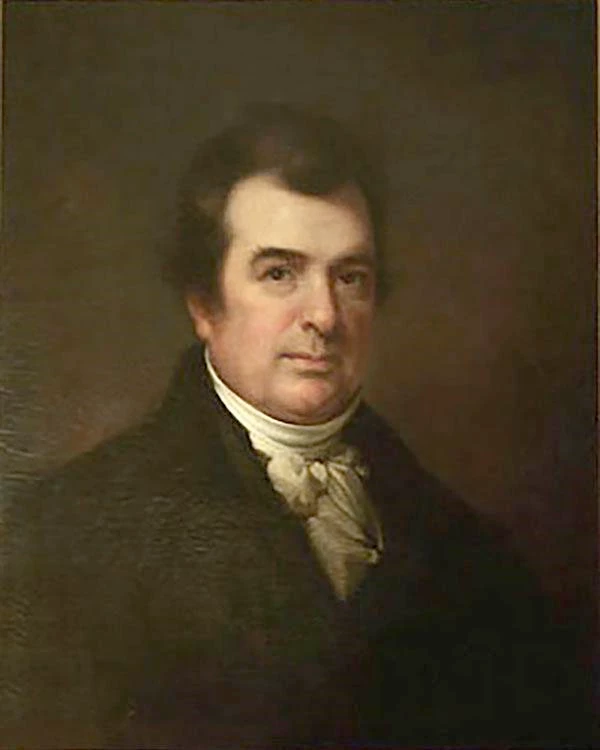Last updated: May 8, 2022
Person
David Hosack

Courtesy Columbia University
David Hosack (1769-1835) was a physician, botanist and educator who remains widely known as the doctor who tended to the fatal injuries of Alexander Hamilton after his duel with Aaron Burr in July 1804. Hosack developed the Elgin Botanic Garden in New York City, as well as an extensive private garden at his country house, Hyde Park in New York’s Hudson River Valley.
David Hosack was born in New York on August 31, 1769. While pursuing a classical education at both Columbia and Princeton, he studied medicine privately, attending lectures by Samuel Bard and Benjamin Rush. In 1790 he entered the Medical School of the University of Pennsylvania. Two years later, he continued his medical studies at the University of Edinburgh. While in Scotland, Hosack paid a visit to his father’s birthplace, Elgin, where he spent time with relatives, as well as the Duke and Duchess of Gordon, who were designing the landscape gardens at their home in the manner of Lancelot “Capability” Brown. The following year, Hosack arrived in London to study mineralogy and botany.
In 1794, he returned to New York and established himself as the personal physician of several politically prominent families, and was soon after appointed professor of botany and later professor of medicine at Columbia College. In 1801, Hosack purchased twenty acres of land in New York City and established the Elgin Botanic Garden (named for his father’s birthplace in Scotland), the first botanic garden in this country.Hosack entered into a professional partnership with Samuel Bard around 1795, assuming sole responsibility for the practice upon Bard’s retirement in 1799.
Hosack was a central figure in New York’s cultural life. His home functioned as a salon where American writers and artists mingled with physicians and scientists. His art collection included contemporary American landscape paintings, such as John Trumbull’s Niagara Falls, from Two Miles Below Chippawa, and Italian Old Masters. Hosack was a patron of Thomas Cole (1801-1848), one of the founders of the Hudson River School of landscape painters.
With the fortune brought to marriage by his third wife, Magdalena Coster, Hosack purchased the Hudson River estate Hyde Park from the heirs of his deceased partner Samuel Bard in 1828. Hosack retired to Hyde Park, devoting the rest of his life to landscaping the grounds. The estate became well known for its views of the Hudson River, and for its celebrated gardens, walks, and drives that Hosack laid out under his ownership.
Hosack died of a stroke in 1835, reportedly brought on by his exertions during the great fire that destroyed lower Wall Street about a week earlier.
Sources
Alexander Eddy Hosack, “A Memoir of the Late David Hosack,” in Lives of Eminent American Physicians and Surgeons of the Nineteenth Century, ed. Samuel David Gross (Philadelphia: Lindsay & Blakiston, 1861).
Victoria Johnson, American Eden: David Hosack, Botany, and Medicine in the Garden of the Early Republic. (New York: Liveright Publishing Corporation, 2018).
Patricia M. O'Donnell, Charles A. Birnbaum, and Cynthia Zaitzevsky, Cultural Landscape Report for Vanderbilt Mansion National Historic Site: Volume I: Site History, Existing Conditions, and Analysis (Boston: U.S. Department of the Interior. National Park Service, 1992).
Christine Chapman Robbins, David Hosack: Citizen of New York (Philadelphia: The American Philosophical Society, 1964).
